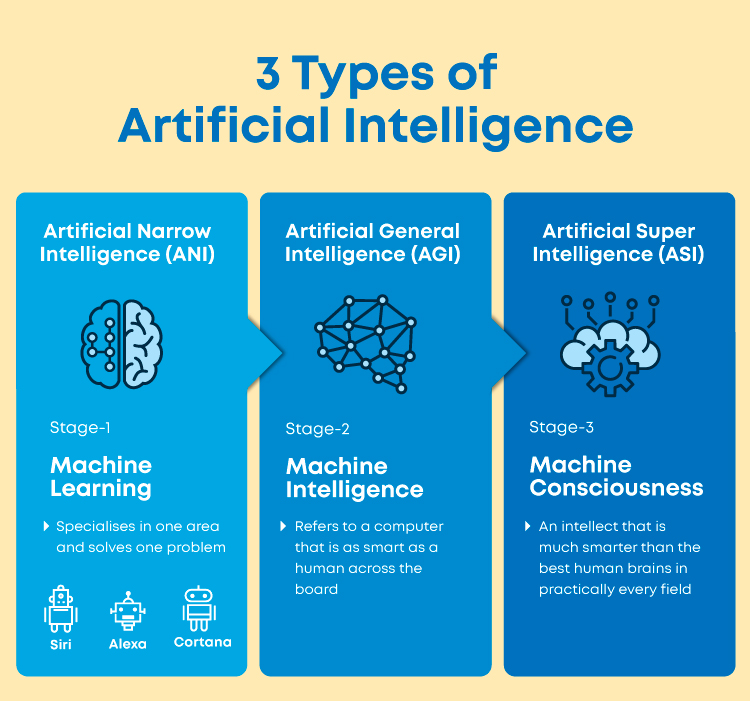Different Artificial Intelligence entities are built for different purposes, and that’s how they vary. AI can be classified based on Type 1 and Type 2 (Based on functionalities). Here’s a brief introduction to the first type.
3 Types of Artificial Intelligence
- Artificial Narrow Intelligence (ANI)
- Artificial General Intelligence (AGI)
- Artificial Super Intelligence (ASI)
Let’s take a detailed look.
What is Artificial Narrow Intelligence (ANI)?
This is the most common form of AI that you’d find in the market now. These Artificial Intelligence systems are designed to solve one single problem and would be able to execute a single task really well. By definition, they have narrow capabilities, like recommending a product for an e-commerce user or predicting the weather. This is the only kind of Artificial Intelligence that exists today. They’re able to come close to human functioning in very specific contexts, and even surpass them in many instances, but only excelling in very controlled environments with a limited set of parameters.
What is Artificial General Intelligence (AGI)?
AGI is still a theoretical concept. It’s defined as AI which has a human-level of cognitive function, across a wide variety of domains such as language processing, image processing, computational functioning and reasoning and so on.
We’re still a long way away from building an AGI system. An AGI system would need to comprise of thousands of Artificial Narrow Intelligence systems working in tandem, communicating with each other to mimic human reasoning. Even with the most advanced computing systems and infrastructures, such as Fujitsu’s K or IBM’s Watson, it has taken them 40 minutes to simulate a single second of neuronal activity. This speaks to both the immense complexity and interconnectedness of the human brain, and to the magnitude of the challenge of building an AGI with our current resources.
What is Artificial Super Intelligence (ASI)?
We’re almost entering into science-fiction territory here, but ASI is seen as the logical progression from AGI. An Artificial Super Intelligence (ASI) system would be able to surpass all human capabilities. This would include decision making, taking rational decisions, and even includes things like making better art and building emotional relationships.
Once we achieve Artificial General Intelligence, AI systems would rapidly be able to improve their capabilities and advance into realms that we might not even have dreamed of. While the gap between AGI and ASI would be relatively narrow (some say as little as a nanosecond, because that’s how fast Artificial Intelligence would learn) the long journey ahead of us towards AGI itself makes this seem like a concept that lies far into the future.
#ArtificialNarrowIntelligence #ArtificialGeneralIntelligence #ArtificialSuperIntelligence





